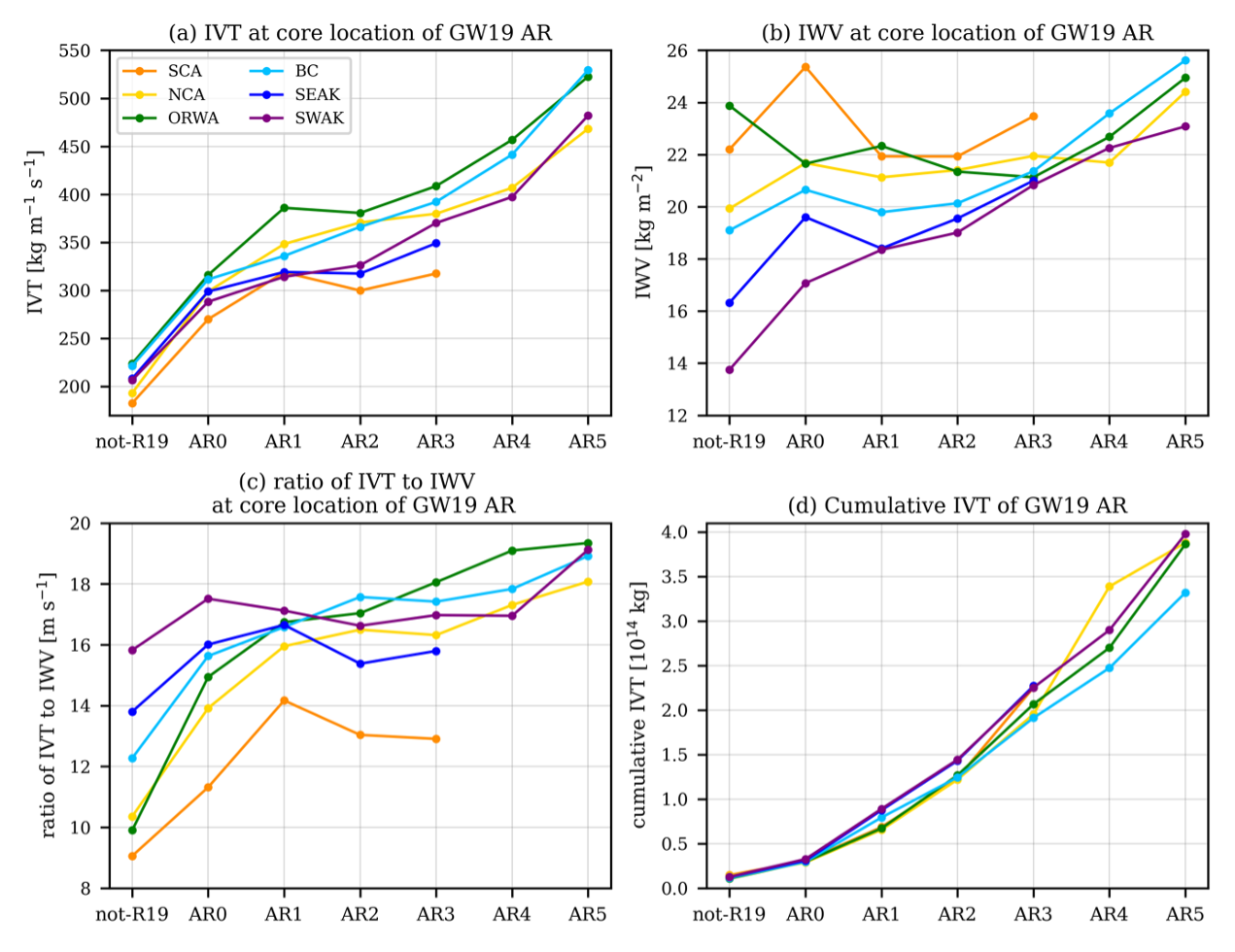CW3E Publication Notice
Local and Object-based Perspectives on Atmospheric Rivers Making Landfall on the Western North American Coastline
April 10, 2024
A new article titled, “Local and Object-based Perspectives on Atmospheric Rivers Making Landfall on the Western North American Coastline” was recently published in the American Meteorological Society’s Journal of Hydrometeorology by Wen-Shu Lin (CW3E), Joel Norris (CW3E), Michael DeFlorio (CW3E), and Marty Ralph (CW3E). This work contributes to the Atmospheric River Research and Applications priority area in CW3E’s 2019-2024 Strategic Plan by investigating characteristics of atmospheric rivers (ARs) affecting the western North American coastline, and was sponsored by the California Department of Water Resources Atmospheric River Program and the US Army Corp of Engineers.
This paper presents the climatology and variability of landfalling ARs over the western North American coastline, including AR intensity, duration, coastal extent, IVT temporal evolution, and synoptic conditions. ARs are defined by the Ralph et al. (2019) and Guan and Waliser (2019) AR detection algorithms for the local and object-based perspectives, respectively. The intensity of ARs is ranked following the classification scheme of Ralph et al. (2019). The local perspective shows higher AR frequency in Oregon and Washington and lower AR frequency in Southern California and southeastern Alaska, regardless of AR ranks (Fig. 1 left). Strong ARs are less frequent but with a greater seasonal cycle than weak ARs. However, the object-based perspective shows less geographical variation of AR frequency (Fig. 1 right). Although there is nearly no seasonal cycle of AR frequency in Alaska, ARs intensify in summer but weaken in winter.
Our results using object-based analysis additionally highlight that the strong ARs at lower latitudes are associated with stronger wind than weak ARs, while strong ARs at higher latitudes are associated with greater moisture than weak ARs (Fig. 2b,c). IVT at the AR core is largest for stronger ARs in Oregon and Washington and decreases poleward and equatorward (Fig. 2a). One common feature for ARs in object-based analysis is that both IVT in the AR core and cumulative IVT along the coastline usually increase from the first to second day for strong ARs but decrease after the first day of landfall for weak ARs, and hence the strength of an AR could not solely be determined by the IVT magnitudes upon ARs making landfall. These results are important to more comprehensively understand the relationship between AR characteristics and the resulting impacts on communities and the landscape.
Figure 1. Adapted from Figs. 2 and 5 from Lin et al. (2024). Left: The R19 AR frequency for (a) annual mean [hours month-1], (b) NDJFM departure from the annual mean [hours month-1], and (c) JJASO departure from the annual mean [hours month-1] for 250-km intervals along the western North American coastline. Right: AR frequency associated with the GW19 AR objects for (a) annual mean [hours month-1], (b) NDJFM departure from the annual mean [hours month-1], and (c) JJASO departure from the annual mean [hours month-1] for 250-km intervals along the western North American coastline.
Figure 2. Fig. 9 from Lin et al. (2024). (a) IVT [kg m-1 s-1] at the core location, (b) average IWV [kg m-2] at core location, (c) average ratio of IVT to IWV [m s-1] at core location, and (d) cumulative IVT [1014 kg] along the coastline and over the duration of the AR averaged over the GW19 AR objects in six coastal regions.
Lin, W., Norris, J. R., DeFlorio, M. J., & Ralph, F. M. (2024). Local and Object-based Perspectives on Atmospheric Rivers Making Landfall on the Western North American Coastline. Journal of Hydrometeorology (published online ahead of print 2024). https://doi.org/10.1175/JHM-D-22-0155.1


